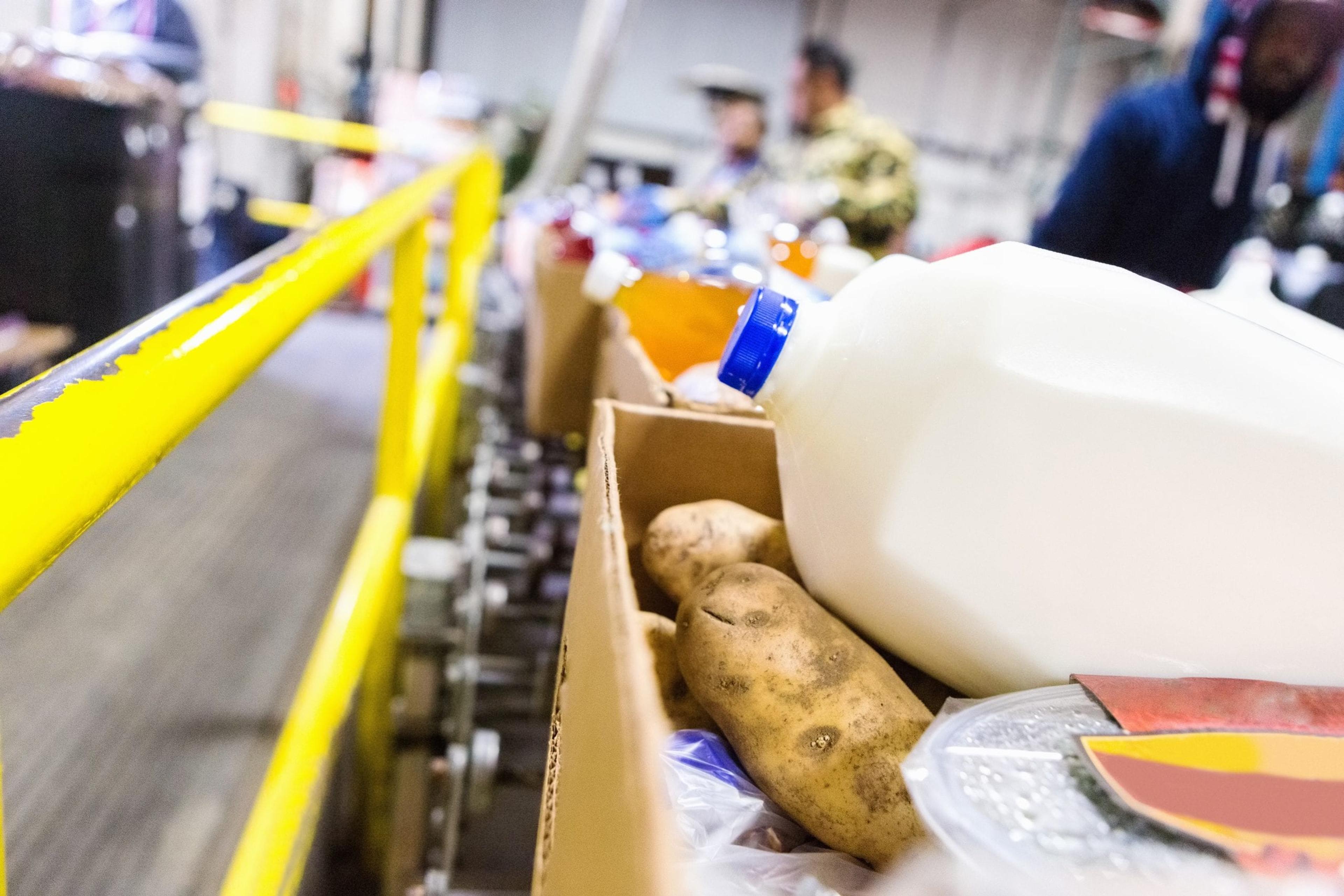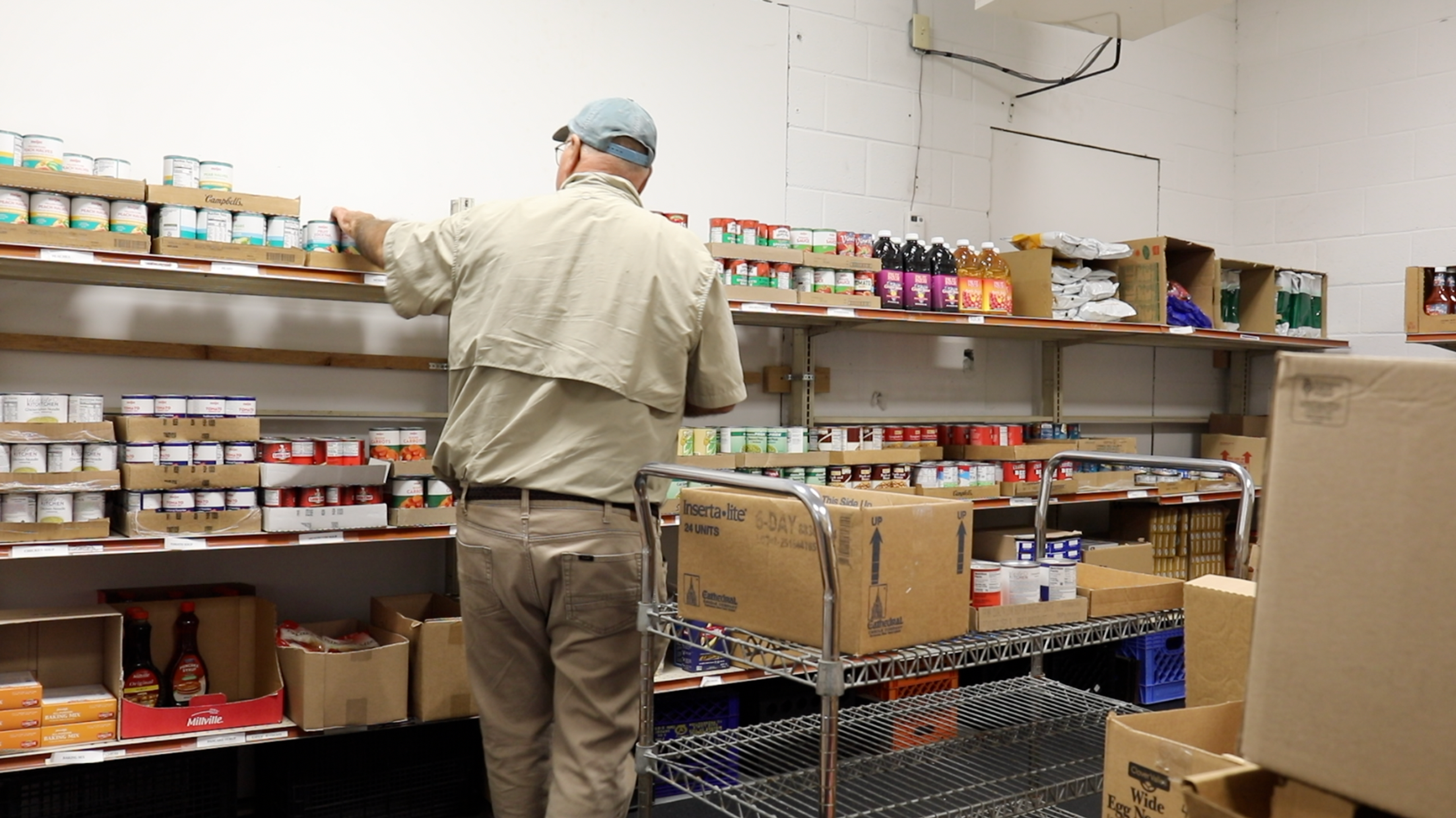
Food or gas? For one southeast Michigan mom, filling the fridge and pantry meant her car’s fuel tank might run empty. Amid these circumstances, Alecia Gleason was able to turn to the Livingston-based Fresh Market Pantry, run out of Gleaners Community Food Bank’s Shared Harvest Pantry. The weekly market allowed her to stock up on fruits, vegetables and milk for her three children and herself. Gleason’s story was featured in Gleaners’ 2019 Annual Report. “The support we get here means I won’t run out of gas, and that we have other necessities,” the single mom explained. It also means better nutrition, empowering Gleason to take better care of herself. “I feel healthy again,” she said. “I have to stretch my budget every day. If we have healthy food in the house, it goes to the kids. With this market, now I get to eat healthy too.” Food pantries often fill the gaps for people trying to balance finite resources. “We can take hunger off the table for a household … so the resources they have can be shifted toward something else they might need,” explained Stacy Averill, vice president, Community Giving and Public Relations at Gleaners Community Food Bank.
Defining food insecurity
Feeling financially stretched is a reality for many Michigan families when it comes to buying food at the expense of other necessities. The U.S. government defines food insecurity as, “the disruption of food intake or eating patterns because of lack of money and other resources.” Prior to the COVID-19 pandemic, more than 37 million people in the U.S., including more than 11 million children, were considered food insecure according to Feeding America. In 2018, about 13.6% of Michiganders faced food insecurity – that’s about 1.3 million people. The Food Bank Council of Michigan is comprised of seven regional food banks that supply food to 3,000 local agencies spread throughout Michigan’s 83 counties. Prior to COVID-19, the organization was delivering 2.6 million pounds of food per week; since the end of March, they’ve coordinated delivery of 4.6 million pounds. Read more about how the pandemic has heightened food insecurity here.
Food insecurity is a major public health problem
It’s important to note that food insecurity, especially in the U.S., doesn’t always look like completely bare cupboards – it could look like a family buying food they can afford that is sold where they can access it, which might not be the healthiest or most nutritious. Many inexpensive convenience foods are high in fat, sodium and sugar. While these foods meet a hunger need, when eaten frequently they can contribute to poor health outcomes, including diabetes, obesity and heart disease, which leads to higher health care costs. Considered a social determinant of health, food insecurity is one of many factors that make up overall health. Experts say more than 80% of what goes into how healthy people are isn’t driven by the medical care they receive but by social determinants such as food insecurity, poverty and structural inequities. “Health care costs are much higher in the United States because of food insecurity,” said Craig Gundersen, ACES distinguished professor, Department of Agricultural and Consumer Economics, University of Illinois, during a recent Michigan Food Security Council meeting at the end of September. “Food insecurity is the leading public health issue in the United States related to nutrition, no doubt about it.” A food-insecure adult has average annual health care costs that are roughly $1,800 higher than a food secure adult in the U.S. – more than $1,900 higher in Michigan – and in 2016, more than $52 billion in health care costs were associated with food insecurity. According to a report from Feeding America, food insecurity, “increases stress and the risk of poorer mental health, affecting people’s capacity to manage their overall health.” When financial resources are scarce, food insecurity can also force people to choose to “skip or delay medication refills and clinic visits – complicating disease self-management and continuing the cycle of poor health.”
Who is most at risk for food insecurity?
When it comes to food insecurity, households with children tend to have higher rates, as do Black and Hispanic individuals and families, especially in segregated areas. Gundersen noted that households with a child or adult with a disability “are in much greater danger for food insecurity,” especially for those with mental health challenges. Households headed by someone between the ages of 18-30 without a college degree also face increased food insecurity, he noted. In Michigan, about 43% of people who are food insecure live in southeast Michigan, although pockets of need are great in northern Michigan and the Upper Peninsula as well, explained Dr. Phil Knight, executive director, Food Bank Council of Michigan (FBCM). Of the people who access food through pantries affiliated with FBCM, 47% have a full-time job. About one quarter are children, another 19% are senior citizens and 6% are homeless. While programs like the Supplemental Nutrition Assistance Program (SNAP) fill the food gap for many families, Knight said many in need of support don’t qualify. In 2017, the Food Bank Council of Michigan released a Self-Sufficiency Standard that looked at how much income families would need to fulfill all their basic needs without public or private assistance. Knight said it exposed a reality that many families in Michigan face – they make more than the federal government’s official poverty measure but are “nevertheless far below what is necessary to meet families’ basic needs.” According to the Self-Sufficiency Standard, a single parent living in Detroit with a preschooler and a school-aged child to support would need to make $24.02 per hour to meet all their basic needs. Based on the standard, there are no counties in the state where a single parent with one preschool-age child could meet their basic needs working full-time at the current minimum wage.
Help to address food insecurity
Knight said solving food insecurity can’t fall solely on the shoulders of non-profit organizations and food pantries. Collaboration must take place in various sectors, including health care, government, business and more. For people in need of food assistance in Michigan, FBCM’s Find a Food Bank feature can help locate nearby pantries. If you’re able to help families, Averill said organizations like Gleaners rely heavily on support from local businesses and individual donors. Consider a monetary donation to your local food bank or check their website to see how you can make the most impact whether it be through volunteering or specific donation items. Ensuring people can continue to access nutritious foods through their local food bank means one less worry for working individuals and families.
- Learn more about how Blue Cross Blue Shield of Michigan is working to address food insecurity through strategic partnerships and investment in Michigan communities.
- Learn more about how COVID-19 has worsened food insecurity in Michigan and find more resources if you’re in need of food assistance.
Editor's Note: This is one story in part of a year-long blog series. Blue Cross Blue Shield of Michigan journalists will be diving into some of the environmental and socio-economic reasons behind disparate health outcomes for certain groups of people. While there is no one answer or simple solution to resolving these complex issues, we’ll talk to community organizations working to address social determinants of health in neighborhoods and communities across Michigan, as well as highlight work that Blue Cross is doing to contribute to solutions for the health of all Michiganders. Related:
- Donation to Gleaners Community Food Bank Helps Address Food Insecurity
- Empowering Food Justice Efforts in Grand Rapids
- How a Prescription for Produce Changed One Woman's Life
Photo credit: SDI Productions





